During the aftermath of the recent neutron star merger, ejecta from an initial explosion formed a shell around the black hole formed from the merger. A jet of material propelled from a disk surrounding the black hole first interacted with the ejecta material to form a broad “cocoon.” Later, the jet broke through to emerge into interstellar space, where its extremely fast motion became apparent. The jet appeared to be traveling four times the speed of light. This phenomenon is known as superluminal motion. It arises due to the jet traveling at nearly the speed of light and at a small angle relative to our line of sight. Since the jet is moving at nearly the speed of light, when a particle within the jet emits a bit of light the particle doesn’t fall far behind the bit of light it emitted. When a long time passes and the particle emits a second bit of light, it will do so close to the first one and when the light reaches us the particle will appear to have been moving faster than light.
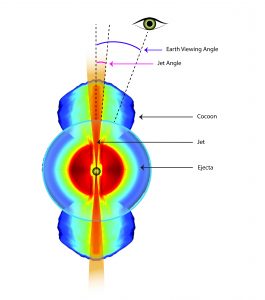
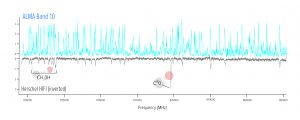
Spectral Lines in the Cat’s Paw Nebula
The upper blue portion of this graph shows the spectral lines ALMA detected in a star-forming region of the Cat’s Paw Nebula. The lower black portion shows the lines detected by the European Space Agency’s Herschel Space Observatory. The ALMA observations detected more than ten times as many spectral lines. Note that the Herschel data have been inverted for comparison. Two molecular lines are labeled for reference.
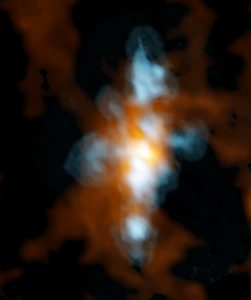
Heavy Water in NGC 6334I
Composite ALMA image of NGC 6334I, a star-forming region in the Cat’s Paw Nebula, taken with the Band 10 receivers, ALMA’s highest-frequency vision. The blue component is heavy water (HDO) streaming away from either a single protostar or a small cluster of protostars. The orange region is the “continuum emission” in the same region, which scientists found is extraordinarily rich in molecular fingerprints, including glycoaldehyde, the simplest sugar-related molecule.
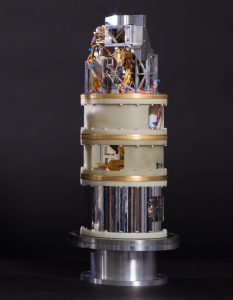
ALMA’s Band 10 Receiver
Pictured here is one of the cold cartridge assemblies of the Band 10 receiver, which gives ALMA its highest-frequency capabilities. The Band 10 receiver can only be used under ideal conditions when there is minimal water vapor present in the atmosphere above the already arid Atacama Desert. Use of this receiver recently allowed astronomers to detect steams of heavy water (HDO) and complex molecules in a region of the Cat’s Paw Nebula.
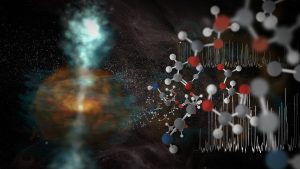
ALMA’s Highest-Frequency Capabilities
A team of scientists using the highest-frequency capabilities of the Atacama Large Millimeter/submillimeter Array (ALMA) has uncovered jets of warm water vapor streaming away from a newly forming star. The researchers also detected the “fingerprints” of an astonishing assortment of molecules near this stellar nursery. These two discoveries, made possible by ALMA’s highest-frequency capabilities, are depicted here in this artists impression.
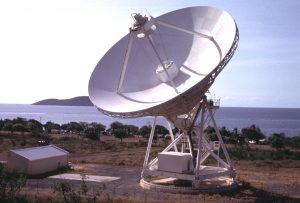
The St. Croix Antenna
The Very Long Baseline Array (VLBA) station on St. Croix, in the U.S. Virgin Islands, in a photo made prior to Hurricane Maria. Funding from the National Science Foundation will be used to repair damage caused by that storm in 2017.

